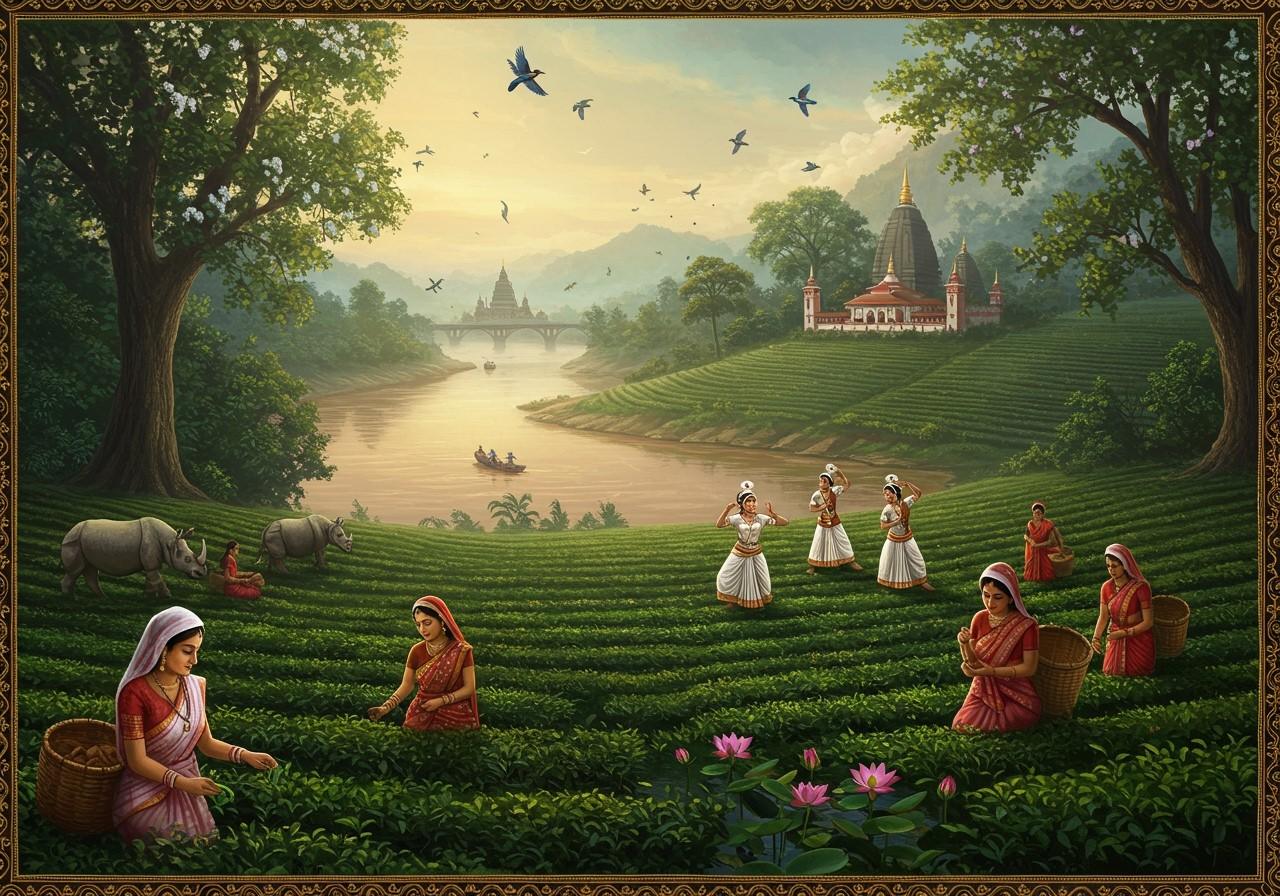
Assam, a northeastern state in India, is renowned for its rich cultural heritage, diverse traditions, and historical significance. Known for its tea gardens, silk, and the mighty Brahmaputra River, Assam has a unique history that has shaped its importance in India. This blog explores how Assam got its name, its journey to becoming part of India, and when it became a state. We’ll also delve into its cultural significance and economic contributions.
How Assam Got Its Name
Assam’s name has a fascinating etymology, influenced by various cultures and civilizations. The history of Assam is marked by the confluence of various cultures, including Austroasiatic, Tibeto-Burman, Tai, and Indo-Aryan. The name Assam is derived from the word ‘asama,’ meaning ‘peerless’ in the extinct Ahom language. This reflects the region’s unique cultural heritage and its historical distinction.
- Ancient Name: Historically, the region was known as Kamarupa during the ancient and medieval periods. This name, meaning “form of Kamadeva,” speaks to the region’s ancient spiritual and mythological connections.
- Ahom Dynasty: The Ahom kingdom, which ruled Assam for over six centuries, played a crucial role in shaping its identity. The name ‘Assam’ is believed to have been derived from the Tai-Ahom word ‘Asom,’ meaning ‘undefeated,’ highlighting their strength and resilience.
- British Period: The British colonial period, while a time of struggle, ultimately solidified the name ‘Assam’ in official usage. This period also saw the development of Assam’s tea industry, which continues to be a vital part of its economy.
Assam’s Integration into India
Assam’s incorporation into India is a complex story involving colonialism, resistance, and eventual integration. It’s a narrative that highlights the region’s strategic importance and the resilience of its people.
- British Annexation: The British East India Company annexed Assam following the Treaty of Yandabo in 1826, marking a turning point in its history. This event brought Assam under British administration and significantly impacted its future.
- Resistance Movements: The people of Assam never passively accepted foreign rule. Resistance movements, such as the Phulaguri Dhewa uprising, demonstrated the local resistance against British policies and their impact on the local population.
- Independence Movement: Leaders like Gopinath Bordoloi played crucial roles in advocating for Assam’s inclusion in independent India. Their efforts ensured Assam’s place within the newly formed nation.
- Post-Independence: Assam officially joined the Indian Union in 1947, becoming an integral part of the newly independent nation. Historically, Assam included the neighboring states of Arunachal Pradesh, Nagaland, Mizoram, and Meghalaya, with its capital shifted from Shillong to Dispur in 1972.
Assam’s Statehood
Following independence, Assam underwent significant administrative changes, reflecting the evolving political landscape of India.
- Provincial Status: Initially, Assam retained provincial status post-independence, maintaining its existing administrative structure.
- Statehood: Assam was reorganized as a state in 1950 under the first schedule of the Indian Constitution, formalizing its status within the Indian Union.
- Reorganization Act 1956: The States Reorganisation Act of 1956 led to the creation of new states and union territories from Assam’s territory, including Nagaland (1963), Meghalaya (1972), and Arunachal Pradesh and Mizoram (1987). These changes reflected the diverse ethnic and linguistic makeup of the region.
Cultural Significance of Assam
Assam’s cultural landscape is a vibrant tapestry woven from diverse traditions, festivals, and art forms. Its rich heritage is a testament to the region’s unique history and the diverse communities that call it home.
- Dance and Music: Assam is renowned for Sattriya, its classical dance form originating in Vaishnavite monasteries called Satras. Bihu, the most prominent festival, celebrates the Assamese New Year with joyous music, dance, and feasting.
- Handloom Industry: The state’s handloom industry is famous for its silk, particularly Muga and Eri, woven into traditional attire like the Mekhela Chador. This craft represents a significant part of Assam’s cultural heritage.
- Cuisine: Assamese cuisine, characterized by bamboo shoots, fish, and indigenous herbs, showcases its unique culinary traditions. This reflects the region’s natural bounty and the ingenuity of its people.
At Poojn.in, we understand the importance of authentic ritual materials in Assamese traditions. For those looking to connect with their heritage or explore Assamese culture, our collection includes:
- Dor Mala (Set of 1 piece, Red Cotton Kalava Raksha Sutra Woden Mala): Perfect for various rituals and ceremonies.
- Kusha Pat (কুশ পত): This sacred grass mat is essential for various Assamese rituals.
- Copper and Brass Utensils: We offer a selection of pure copper and brass utensils specifically for use in Assamese pujas.
Economic Contributions of Assam
Assam’s economy is multifaceted, with significant contributions from agriculture, natural resources, and tourism.
- Tea Industry: Assam’s tea gardens are world-renowned and contribute significantly to its economy, playing a vital role in the global tea market.
- Oil and Natural Gas: The state is rich in natural resources, particularly oil and natural gas, with the Digboi oil refinery being a landmark in the industry.
Conclusion
Assam’s journey through history is a testament to its rich cultural heritage, economic importance, and the resilience of its people. From ancient Kamarupa to its modern statehood, Assam’s story is an integral part of India’s narrative. By understanding its past, we can better appreciate its present and future.


